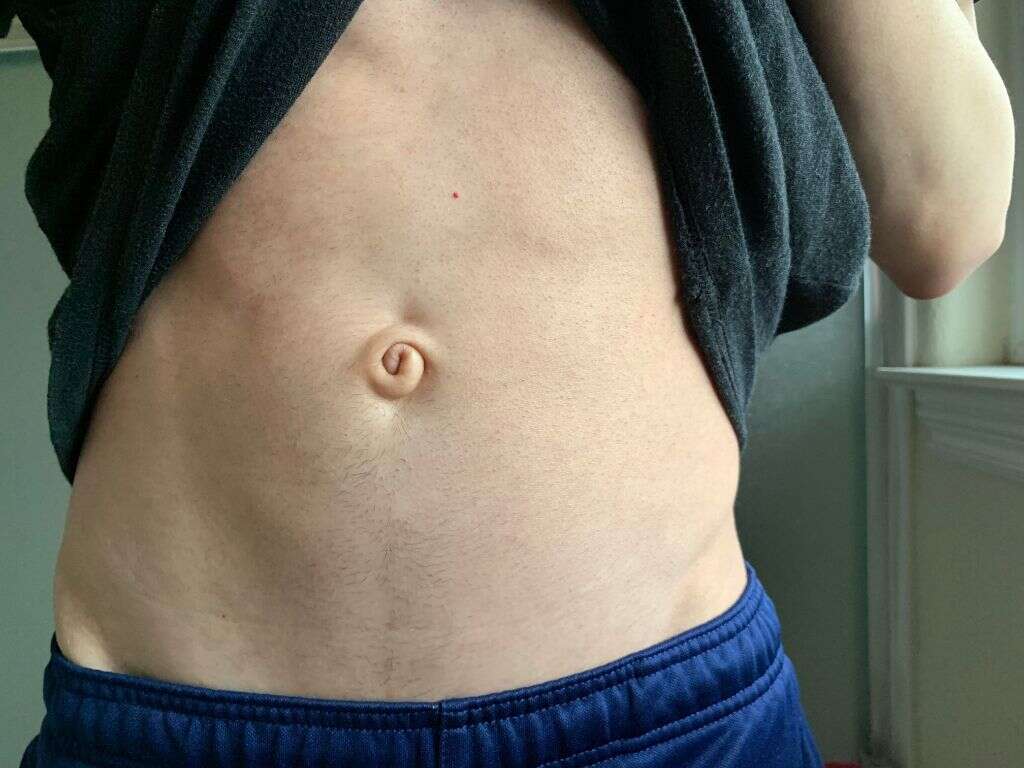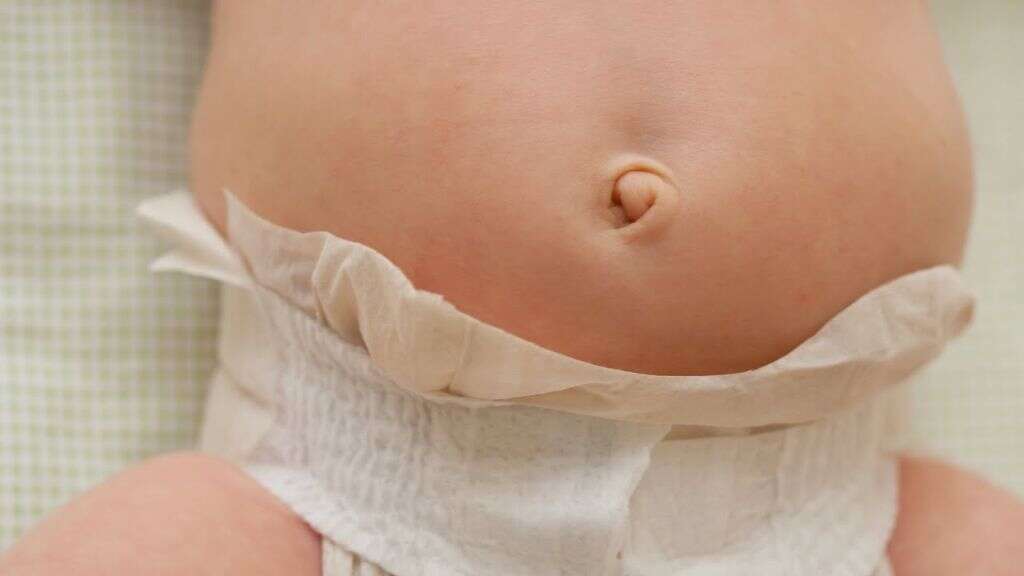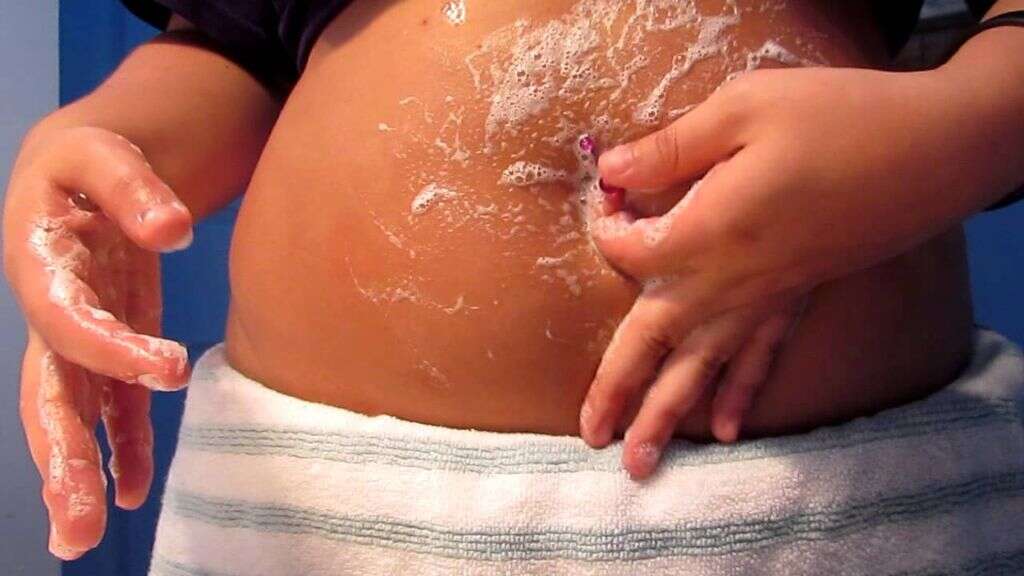What Is a Belly Button Infection?
The belly button is something we all take for granted. Children like to show theirs off, mystics meditate by gazing at theirs, and some people decorate theirs with jewelry. But other than collecting lint, the belly button doesn’t seem to serve much of a purpose.
If your belly button hurts, you may be thinking about it more than usual. You may feel uncertain about what to do and have a lot of questions. Can a belly button become infected? Could this problem be serious? Should you see a doctor? Here is everything you need to know about belly button infections and what to do if you have one.
1. What Is a Belly Button?
The scientific term for belly button is navel or umbilicus. This indentation in the lower abdomen is actually a scar shared by almost all humans, marking the spot where the umbilical cord was attached before birth. After birth, the umbilical cord is usually clamped and cut off to a length of approximately 1 inch. It then falls off naturally in two weeks.
Reptiles, amphibians, birds, and fish do not have belly buttons, but all placental mammals, such as dolphins, dogs, and cows, have them. Mother animals usually bite off their babies’ umbilical cords close to the skin, so the scars are not as pronounced as those of humans. Marsupials and monotremes like the opossum, platypus, and koala do not have belly buttons because they do not have umbilical cords.
2. Do All Belly Buttons Look the Same?
Every person’s belly button is uniquely shaped. It can be shallow or protruding, horizontal or vertical, round or oval, symmetrical or off-center. The way your belly button looks is a result of your genes, not the technique of the doctor who snipped your umbilical cord. And contrary to some social media posts, the shape of a person’s belly button is completely unrelated to personality characteristics.
Some people have no noticeable belly button, just a slight indentation. This condition is sometimes caused by having surgery shortly after birth to correct gastroschisis, a condition in which the intestines stick through a hole in the baby’s abdomen. Some claim that “lotus birth,” a tradition in which the umbilical cord is not cut but is rather allowed to fall off naturally, results in a greatly diminished or absent belly button.

3. What Are the Symptoms of a Belly Button Infection?
The belly button does not contain any organs or specialized structures. However, just like other areas on the surface of your body, it does contain nerve endings, sweat and sebaceous glands, hair follicles, and folds of skin; like other areas of the body, it too is vulnerable to attack by pathogens.
Sometimes the first sign of an infection is a strange smell coming from the belly button. The area may be red or swollen. It may feel hot or be painful to the touch. You may see yellow or greenish puss, or a white, cheesy substance. The skin may be flaky or have pimple-like areas. Signs of a more severe infection are fever, bleeding, red lines radiating out from the navel, abdominal swelling, and change in mood or activity level.
4. Can Babies Get Belly Button Infections?
Omphalitis is the term for a belly button infection in newborn babies. It is rare in the U.S. and other developed countries, but more prevalent in places without good sanitation and medical care. It is caused by bacteria and is most likely to occur in premature babies or in those with extremely low birth weights or weakened immune systems. Symptoms are noticeable within the first five days for premature babies and within nine for babies born at full-term.
To prevent omphalitis, follow your doctor’s instructions for cleaning the umbilical cord stub. Wash it gently with a damp cloth, but don’t use soap, alcohol, or other cleaning or disinfecting agents. Dry it gently, and be sure to keep it outside the diaper. Don’t pull on the cord or try to remove it yourself, and do not bathe the baby in a bathtub until the cord has fallen off and healed.

5. Does Belly Button Piercing Cause Infections?
When a belly button is pierced, a needle is used to create a hole in the flap of skin directly above the navel opening. A piece of jewelry is then worn through the hole, typically with a jewel or other pendant resting inside the belly button. “Outie” belly buttons, or those that protrude, are pierced by creating a hole directly through the protruding skin. The jewelry then dangles in the same way an earring would.
Belly button piercings can take up to one year to heal completely. During that time, piercings can become infected if the piercing needle was not sanitized or if the person has an allergic reaction to the jewelry. Other sources of infection are touching the piercing with unwashed hands, wearing clothes that rub against the belly button, or failing to keep it clean. Piercings through outie belly buttons can cause infections that risk spreading to internal organs and may become life-threatening.
6. Can Poor Hygiene Cause a Belly Button Infection?
It is normal for belly buttons to house countless numbers of microorganisms. One scientific study called the Belly Button Biodiversity Project analyzed bacteria growing in human belly buttons. One participant in the study who had not showered or bathed in several years had thousands of species of bacteria living in his navel; these bacteria coexisted peacefully and caused him no apparent harm.
However, despite the unlikelihood of most people developing a belly button infection, failing to wash the area is one of many risk factors that make it more likely to occur. Experts recommend using a cotton swab to clean the belly button with soap, isopropyl alcohol, or saline solution at least once per week.

7. Can Urine Leaking from the Belly Button Cause Infection?
The urachus is a 1- to 4-inch tube that connects a fetus’s bladder to its umbilical cord. The small amount of urine produced by the baby is then routed through the umbilical cord and processed by the mother’s bloodstream. The urachus atrophies soon after birth, leaving a small scar on the bladder. In rare cases, however, the tube remains intact into adulthood.
Parents may notice that a newborn’s umbilical area seems perpetually wet. Urine may continue to leak from the belly button into adulthood and predispose an individual to belly button infections. More commonly, urachal abnormalities in adults usually take the form of fluid-filled cysts that develop between the two closed ends of the tube. Symptoms usually include pain and problems with urination, rather than belly button infections.
8. Which Pathogens Are Responsible for Belly Button Infections?
Of the thousands of types of bacteria living in human belly buttons, only a handful are known to cause harm. These troublemakers are of the genera staphylococci, corynebacteria, actinobacteria, clostridiales, and bacilli. The most dangerous species is the methicillin-resistant staphylococcus aureus, also known as MRSA, because it is resistant to most antibiotics.
The belly button also makes an ideal climate for fungi to grow. Dark, moist, and full of dead skin cells and other debris, tiny spores can easily land, grow, and reproduce. Candida albicans is a type of yeast that lives in the mouth and vagina and is responsible for thrush and vaginal yeast infections, respectively. The overgrowth of this yeast in the belly button is known as a candidal intertrigo infection.

9. How Is a Belly Button Infection Diagnosed?
When seeing a doctor to discuss a potential belly button infection, be prepared to describe what you have seen, felt, or smelled, and when you first noticed the problem. You will be asked questions to help determine your risk for recurring infections, such as whether you are overweight, have diabetes, sweat excessively, or have a compromised immune system.
The doctor then will examine your belly button to evaluate the severity of your symptoms and to diagnose a cause. He or she may examine a piece of flaked-off skin under a microscope. If discharge, urine, or pus is present, a swab will be used to take a sample for laboratory analysis. A biopsy is not usually required.
10. How Are Belly Button Infections Treated?
If your symptoms are mild, begin by cleaning the area. You may be tempted to scrub hard, but this rough treatment could further damage infected skin. Instead, clean the belly button thoroughly with soap and water or alcohol. Dry it completely, and then apply a topical antibiotic cream. As much as possible, allow your belly button to remain uncovered by clothing until it heals.
If you seek medical attention, a doctor will recommend treatments specific to the pathogen involved. If you are suffering from a yeast infection, you will be prescribed a topical ointment containing an antifungal medicine. If the infection is bacterial, a cream containing antibiotics will be given instead. In the case of a severe infection, you may be required to take oral antibiotics or in extreme cases to receive them intravenously. Most people recover fully from belly button infections with no long-term consequences to their health











